Sectioned Model Case¶
A sectioned model is a plaster model from which the prepared tooth can be removed.
Create the Order¶
Order Information¶
1 Click to enter the order page.
2 Fill in the blanks and select the doctor and the technician from the list. If there is no targeted doctors and technicians, click to add names.
Note
●If there are no targeted doctors and technicians, edit it by following steps.
○Click , enter the doctor's name and click
.
○Click to delete the doctor or technician.
3 Select Restoration as the dentistry type.
4 (Optional) Add notes.

Tooth Selection¶
1 Select Patient Mode.
2 Click the tooth to select the type of restoration.
3 Click the right mouse button (RMB) to cancel the selected type of restoration one by one, or click Clear All to cancel all selected types.
4 (Optional) Set up the bridge.
⑴ Select two or more teeth.
⑵ Click the circle between the two teeth.
⑶ When it turns blue, it means that the bridge has been set.
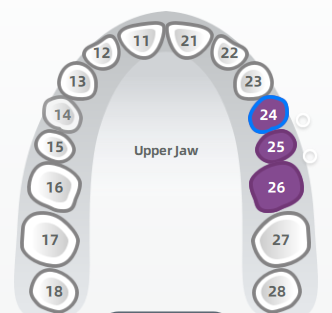 |
 |
|---|---|
| Bridge |
5 (Optional) Click the slider to add scanning steps(pre-op scanning step and gingiva separately scanning step).
6 (Optional) Select implant types in Implant-Based.
7 Select restoration material.
8 Select the tooth color.
9 Click Finish.

Type Selection¶
1 Select Sectioned Model.
2 Select Occlusion Type according to the reality.
Note
● Click the slider to scan marker for jaw movement if needed.
● CLick the slider to choose Baumann articulator when the type of model articulator is Artex CR, Bio-Art, P type, S type (former) and S type.
3 Click Scan to start or click Save to save the order and scan it later.
After saving the order, click Explore to check the storage location.
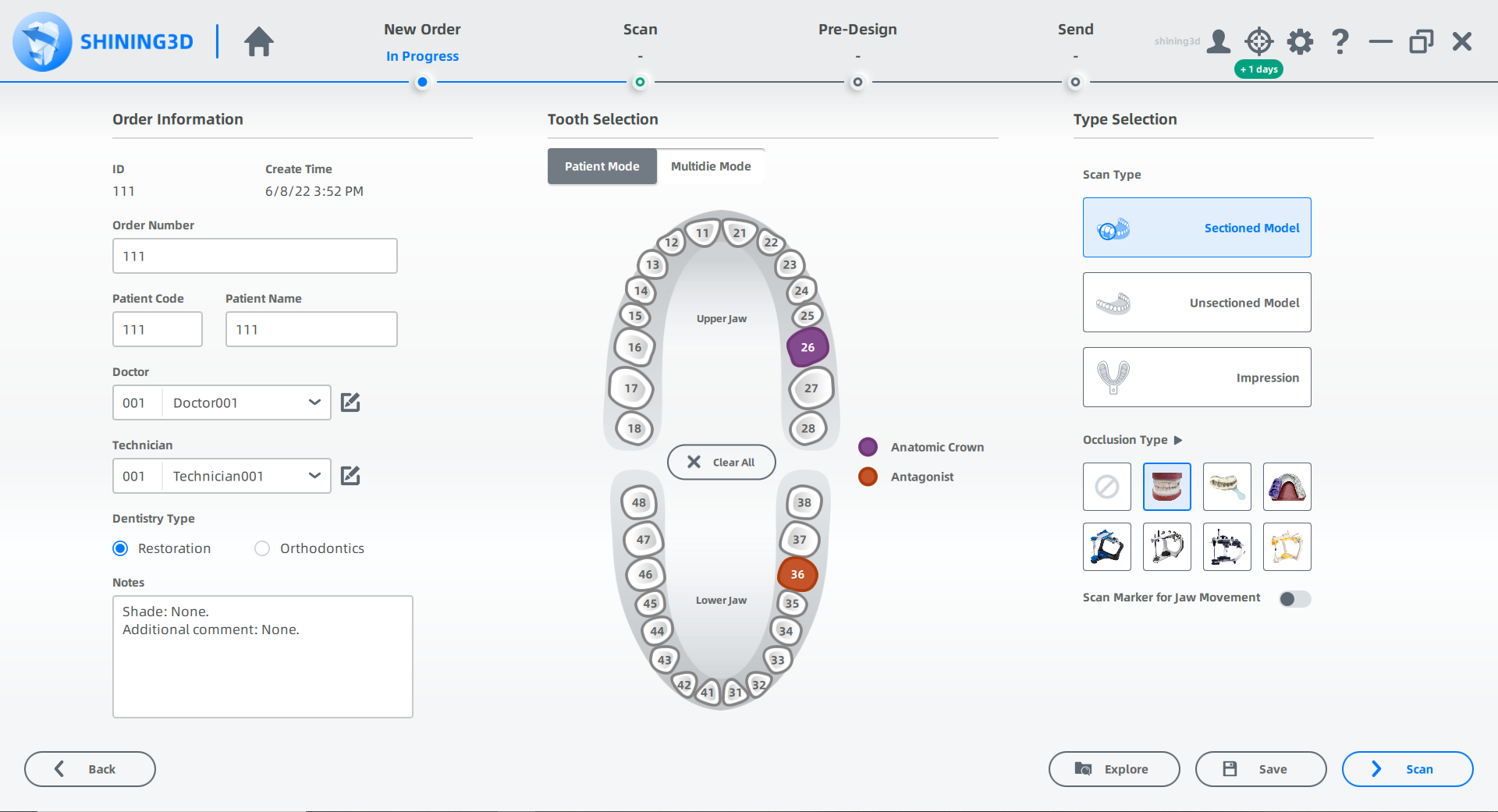
The lower jaw is the working jaw, and the upper jaw is the opposing jaw in this order.
Start Scanning¶
 Total Jaw Scan¶
Total Jaw Scan¶
1 Place the height adaptor, the fixture, and the model.
2 Set the configuration in the camera window. For steps to set parameters, see Parameters.
3 (Optional) Switch on additional functions. For more, see Function.
● : Add scanning paths and process a multi-angle scan. It is enabled by default when scanning the total jaw.
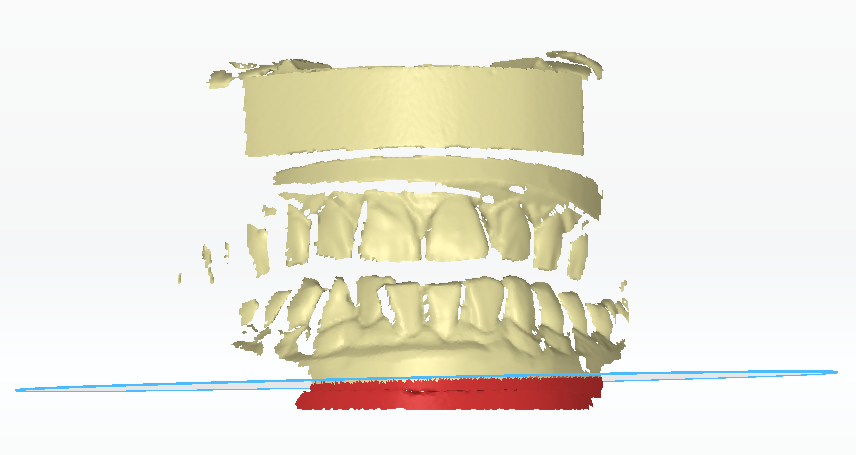 |
 |
|---|---|
● : Add details and process a high-quality scan. For more, see Function.
4 Click or press the space key to start scanning.
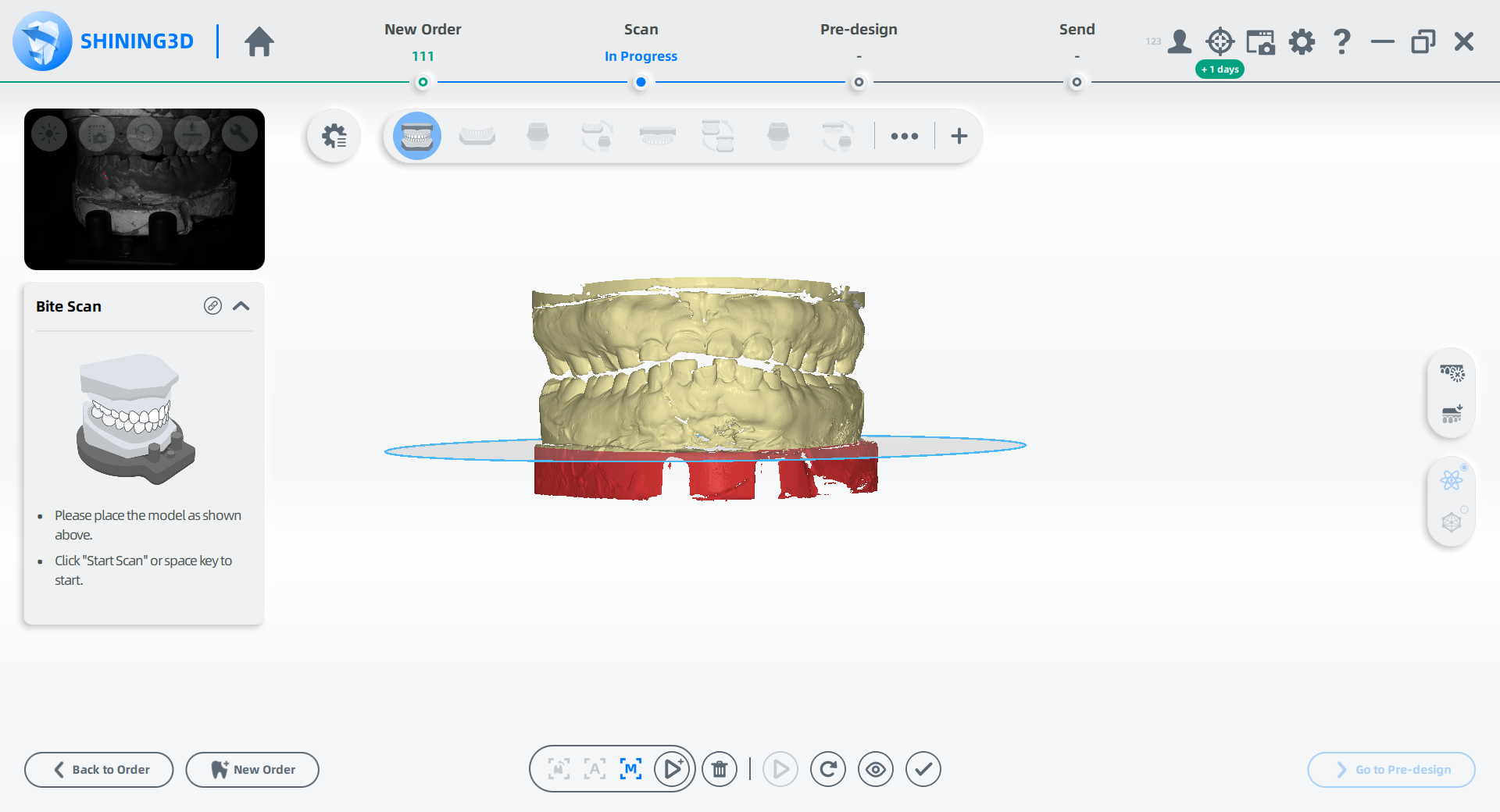
5 After scanning, move or rotate the cutting plane to cut the model.
● Move the cutting plane: Within the cutting plane, press and hold the left mouse button and move the cursor up and down to adjust the cutting height. The area to be deleted is in red.
● Rotate the cutting plane: Move the cursor to the edge of the cutting plane until the edge of the cutting plane turns yellow and a blue arrow appears. At this time, press and hold the left mouse button and move the cursor to rotate the cutting plane. The area to be deleted is in red.
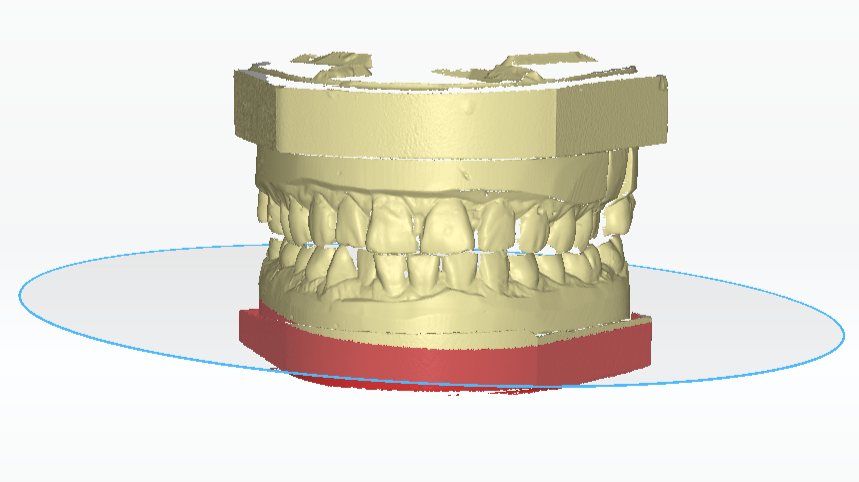 |
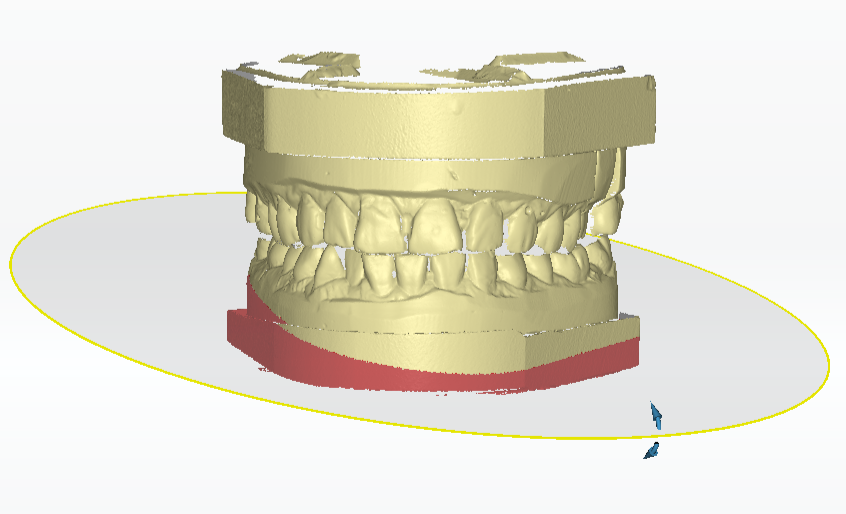 |
|---|---|
| Move Cutting Plane | Rotate Cutting Plane |
6 Click to edit the model. see Function.
7 Click to save the edit and return to the scanning interface.
8 Click to preview the scanned model;
or click
to rescan;
or click
to finish the scanning step.
 Lower Jaw Scan¶
Lower Jaw Scan¶
1 Follow the guidance on the interface to place the model.
2 Click or press the space key to start scanning.
3 If the scanned data is incomplete, click to add more data to the existing scan. For steps to add scan, see Function.
4 After scanning, cut and edit the scanned data for a cleaner scan.
5 Click to finish.
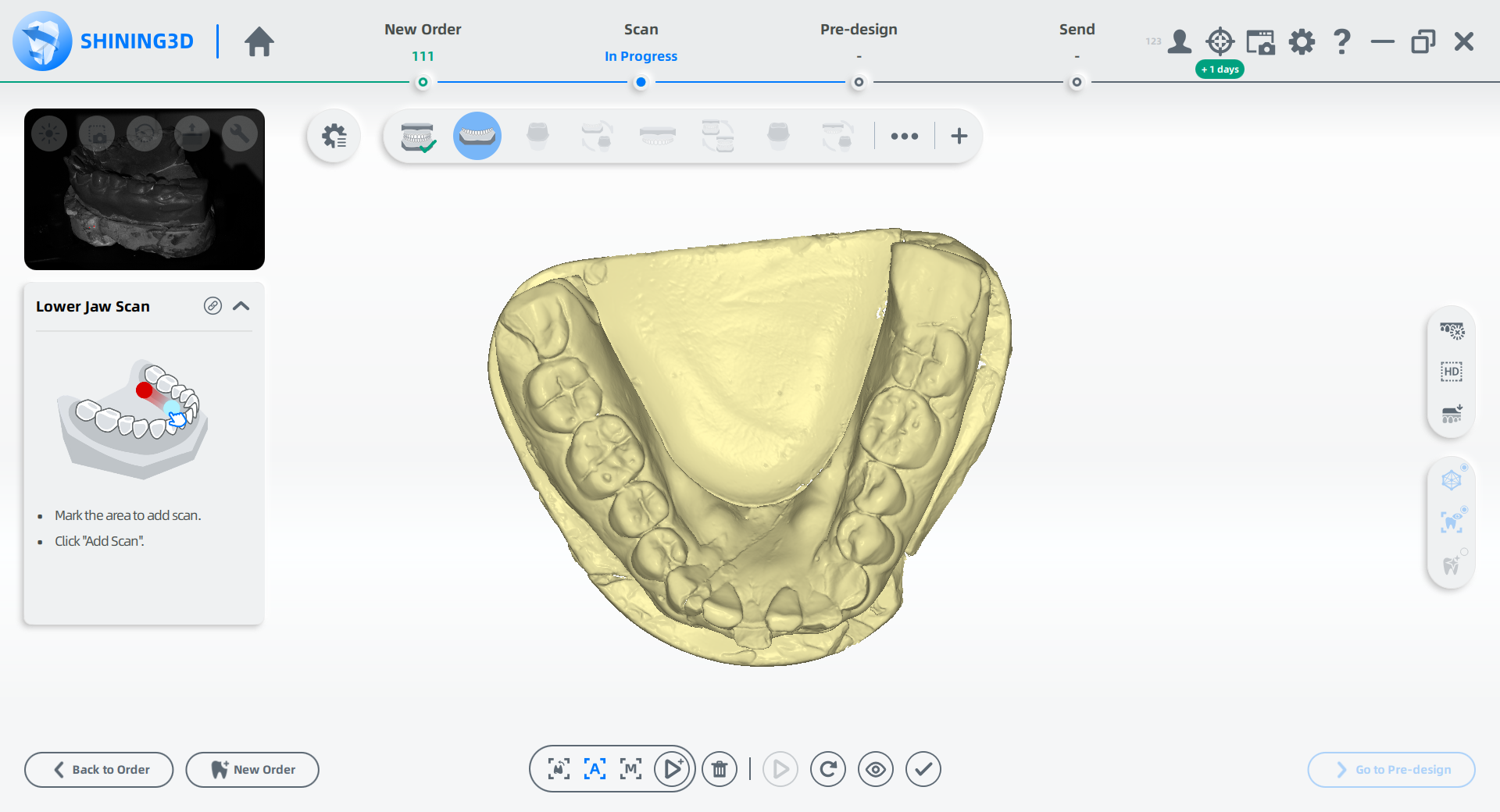
 Die Scan - Lower Jaw¶
Die Scan - Lower Jaw¶
1 Place the model as shown.
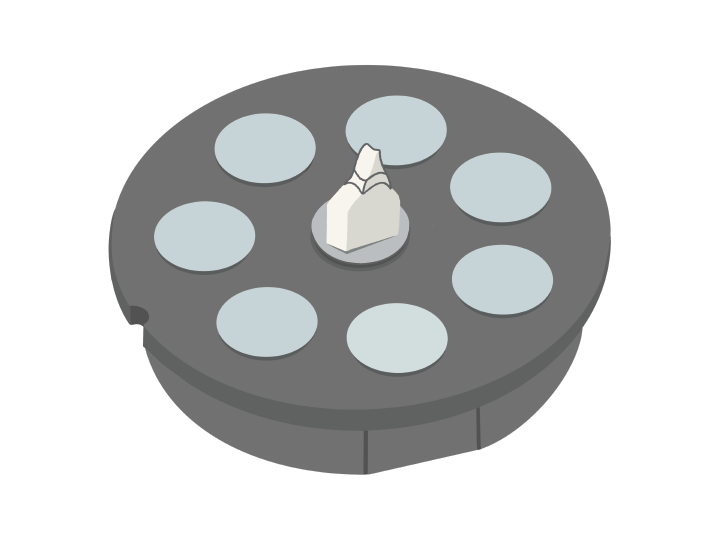
2 Set the configuration in the camera window. For steps to set parameters, see Parameters.
3 (Optional) Switch on additional functions. For more, see Function.
Note
● : Acquire the abutment data.
● : Improve the accuracy of data for scanning unsectioned tooth models.
4 Click or press the space key to start scanning.
5 After scanning, cut and edit the scanned data for a cleaner scan.
6 Click to finish.
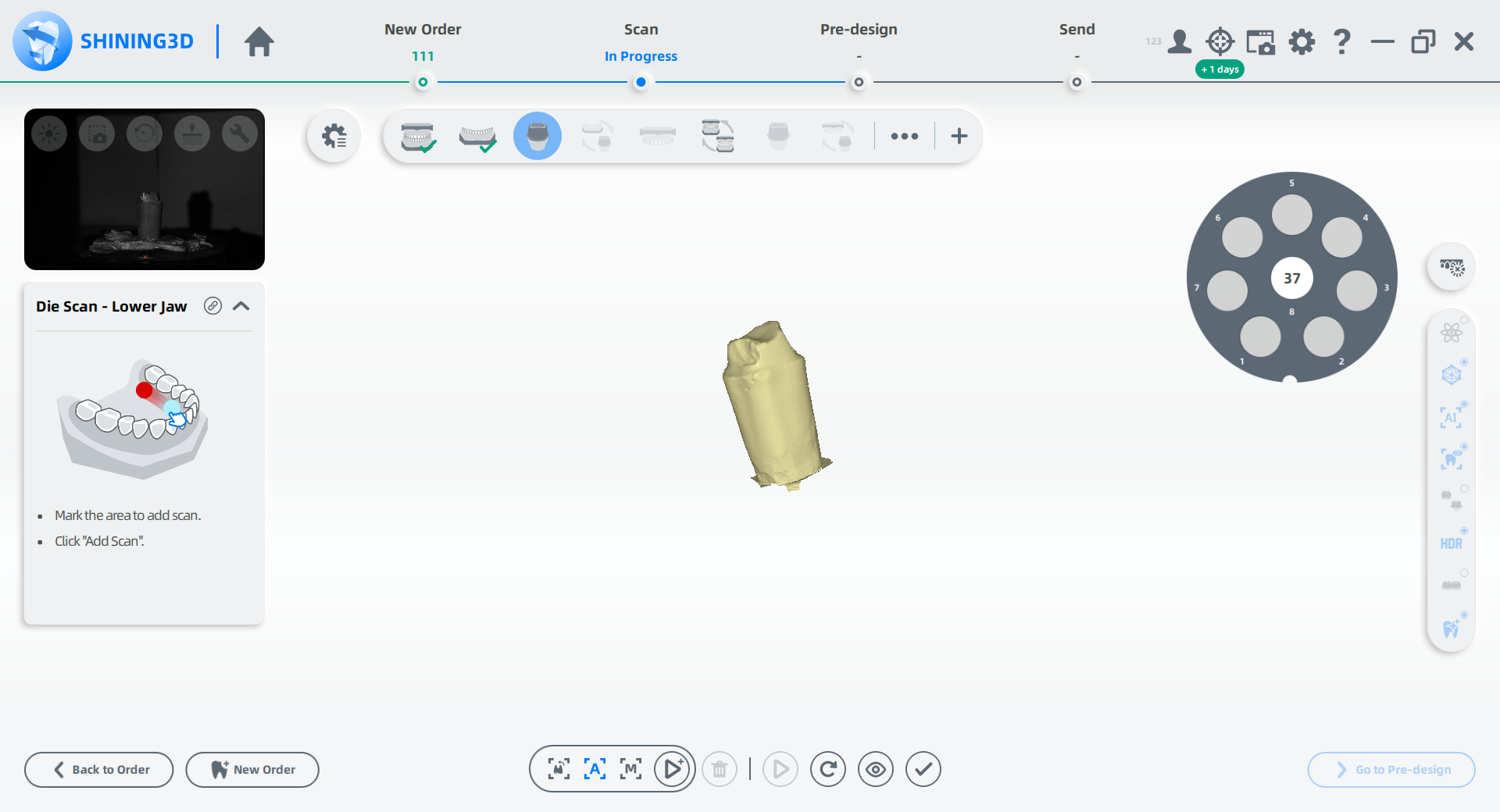
 Die Alignment - Lower Jaw¶
Die Alignment - Lower Jaw¶
1 Check the automatic alignment and click to finish.
2 (Optional) If the result is not optimal, click and align the scanned data manually. For steps to align, see Alignment Operation.
 Upper Jaw Scan¶
Upper Jaw Scan¶
1 Follow the guidance on the interface to place the model.
2 Click or press the space key to start scanning.
3 If the scanned data is incomplete, click to add more data to the existing scan. For steps to add scan, see Function.
4 After scanning, cut and edit the scanned data for a cleaner scan.
5 Click to finish.
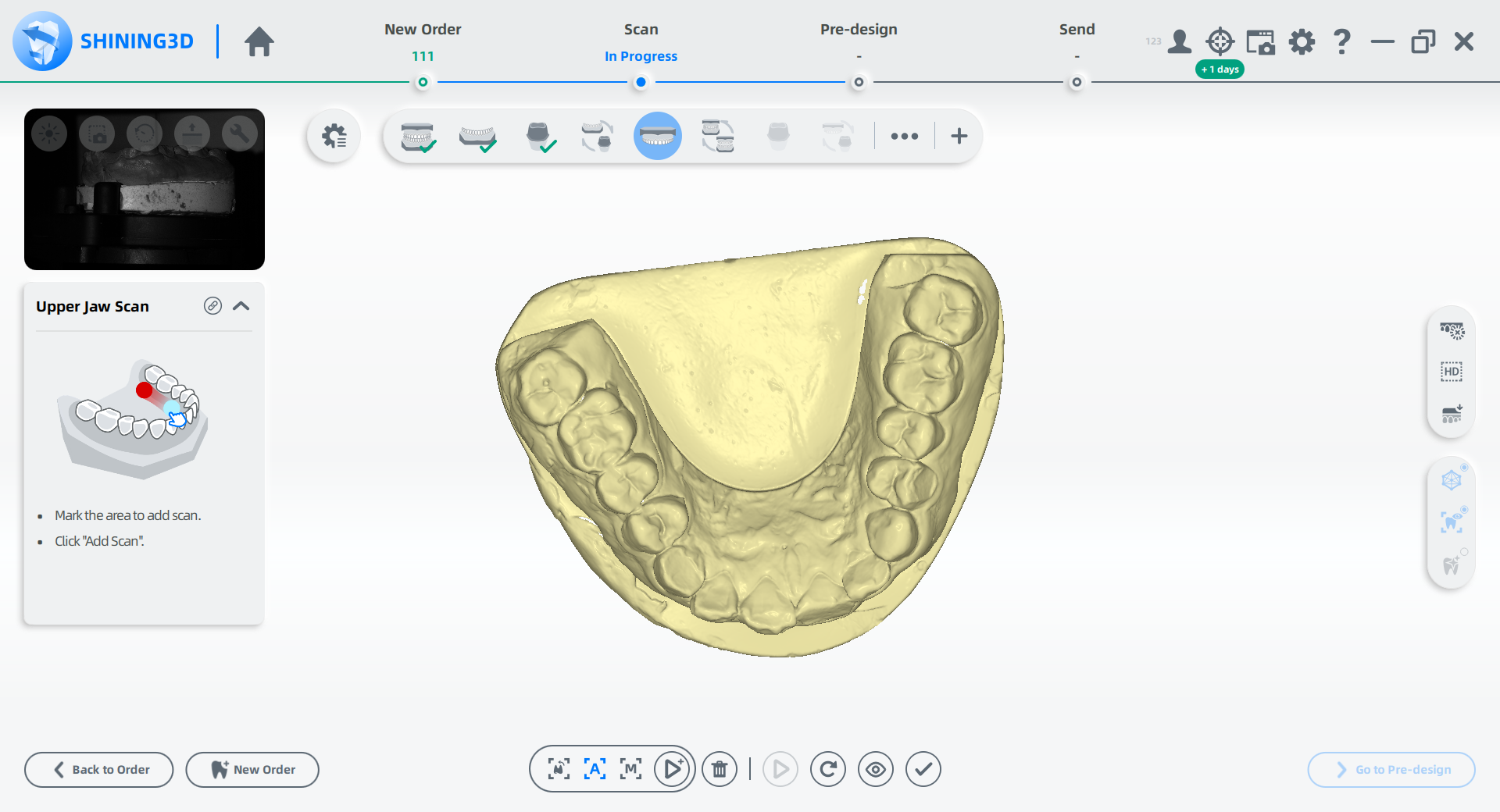
 Occlusion Alignment¶
Occlusion Alignment¶
1 Check the automatic alignment and click to finish.
2 If the result is not optimal, click and align the scanned data manually. For steps to align, see Alignment Operation.
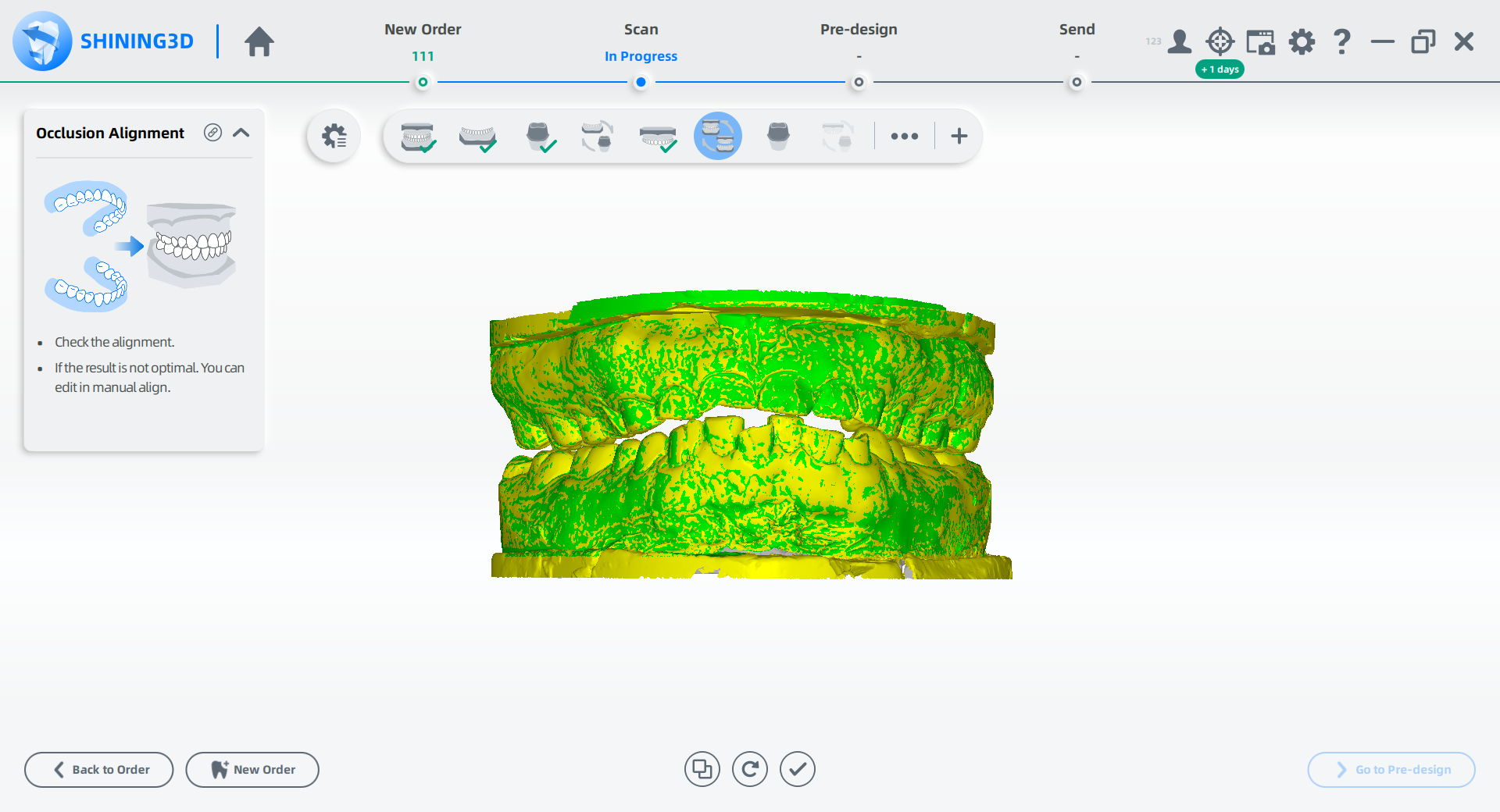
Finish Scanning¶
After finishing the scanning process,click on Go to Pre-design to edit the scanned data.